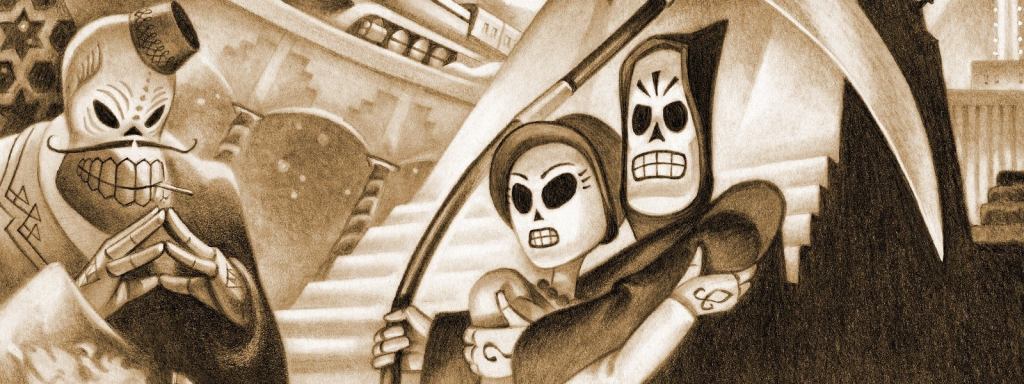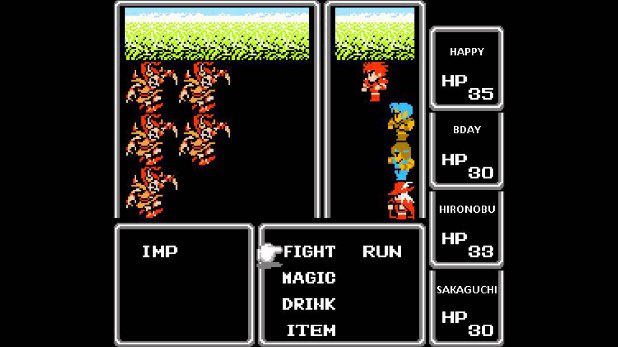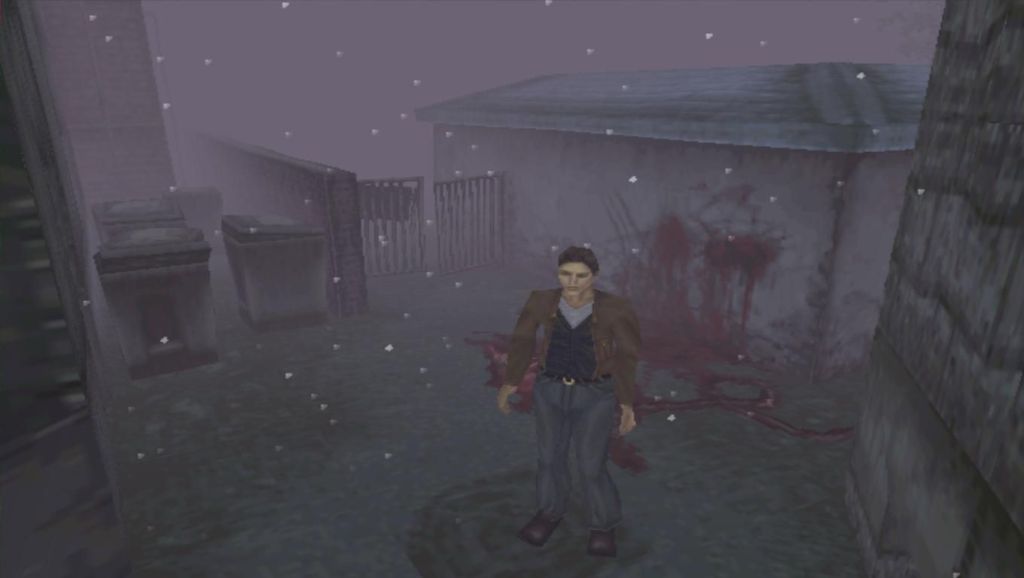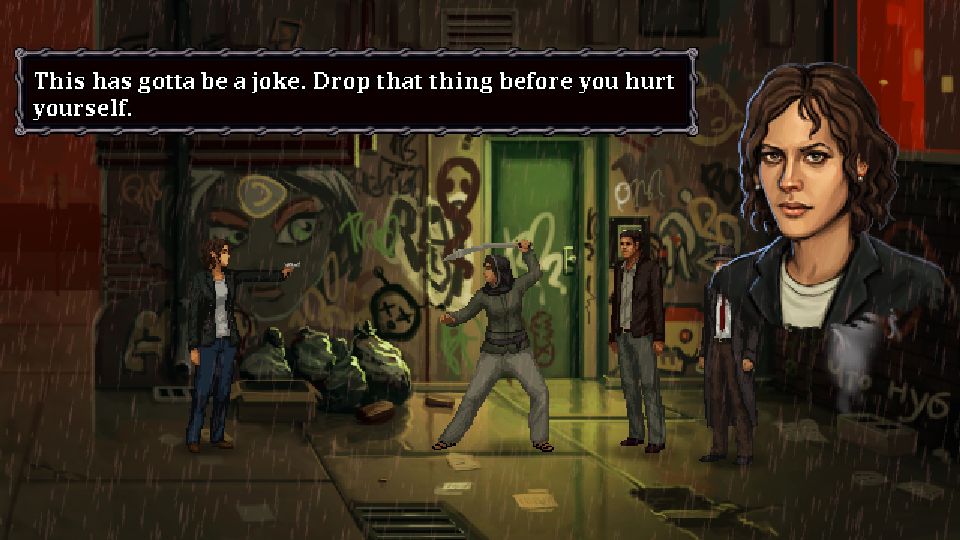Line up the suspects:
- First Person Shooters (according to PC World)
- Moon Logic (Old Man Murray)
- Bad Design (Ron Gilbert)
- Myst (as one among many culprits according to Al Lowe)
- My guess…
An Experience:
Adventure games were quite popular at the beginning of the video gaming revolution and the reason to me is clear: Adventure games offered a kind of gaming experience other genres couldn’t come near: the Experience of Exploration. Graphical Adventure games let you walk, run, and fly through strange and big worlds in a way no other genre could. I define the “Experience of Exploration” as the feeling one gets when they feel they can “get lost” in a world. Great books and movies do something similar, but video games offer a level of interaction that make this experience all the more rewarding.
Other genres of games couldn’t replicate anything like this experience. You had Mario-style platformers, but they focused more on arcade-style mechanics than the experience of exploring a new world. Metroid was about exploration, but it was a fairly lonely experience, and the landscapes, while cool, were rarely anything more than platforming or fighting backdrops. Fun, for sure! But the exploration aspect was not quite what the Adventure game genre could offer. Final Fantasy and other RPG’s did a better job at achieving the experience, but interactivity with the world was far more limited and stats grinding the and focus on random combat did hinder the experience for many people.
Adventure games were the only place to go to get that Experience of Exploration, at your own pace, on your own terms (or the best a type-parser or mouse could get you). But something changed, and it’s still changing. And I think it’s the real assassin of the Adventure game genre.
The Real Killer – Hardware:
As the years went by, games were getting bigger, better, and more advanced. Adventure games did evolve with the hardware, but their main gimmick, the thing that kept most people coming, was that Experience of Exploration. And while Adventure games could get bigger, better, and more advanced just like everything else – their gameplay loop never fundamentally changed. Nor could it change without becoming something fundamentally different.
“So what?” You might say. Adventure games were getting “better” with the upgrades of hardware. They could have better music, bigger worlds, more detailed backgrounds and sprites. “How’s that a bad thing for Adventure games?”
The problem wasn’t that Adventure games were getting “better,” it’s that the other genres were getting better at the same time, and the hardware upgrades allowed them to also start planting their flags in Adventure games’ sacred spot – the Experience of Exploration.
While it is true that platformers didn’t mechanically change that much (bigger jumps, longer jumps, 3D jumps! etc.) the change in hardware allowed them to expand into territory that once only Adventure games roamed – the Experience of Exploration. A platformer like Mario 64 could now be both a joy to explore while also having a gameplay loop that was more “fun” than your typical Adventure game. An Action/Adventure games like Zelda: the Ocarina of Time now offered a great world to explore and interact with, but also featured, again, mechanics that are typically more “fun” than standard Adventure game inventory puzzles. Horror games like Resident Evil and Silent Hill also boasted creepily fun adventuring through zombie/demon infested locales with a added benefit of “fun” combat/resource management.
As Al Lowe said in his article on the death of Adventure games:
“To a certain extent, adventure games’ key elements have been absorbed by the other game genres. Action games, shooters, and RPG’s have all adopted many of the characteristics of adventures.”
And all of this happened at the beginning of the 3D consoles’ history. The Playstation debuted in the United States in 1995. Three years later Adventure game Grim Fandango could win Gamespot’s “Game of the Year” and have universal critical acclaim, but still underperform financially. Now that 3D consoles are into their 5th generation, the opportunity to make non-Adventure games that capitalize on the Experience of Exploration has only widened.
Adventure Games in the Modern World:
Where does that leave Adventure games? They used to have the market cornered on a really lucrative experience – that of really getting lost in a world. While Adventure games haven’t been evicted from this design space, they now share it with any genre that wants it, thanks to the greater flexibility hardware progress has made possible.
Adventure game fans are a comparatively tiny, niche community now. Passionate for sure, but the heyday of Adventure Games as a truly mainstream contender is gone, and I think it’s because what it did best was an artifact of hardware limitations. Now almost any genre of game can offer the Experience of Exploration AND a gameplay loop that appeals more broadly to the general population.
Note: I’m not saying that the gameplay loop of Adventure games is “bad” or “not fun,” only that its appeal is more limited in the general population. Many people love the Adventure game gameplay loop!
Is there anything left that makes Adventure games unique? Yes!
- a “go-at-your-own pace” gameplay speed (usually). Most adventure games let you explore and interact with things without pressuring you to get things done before you are good and ready. There are usually little to no arcade-style dexterity challenges. Some people enjoy that leisure.
- Inventory and environmental puzzle-solving. This is the main gameplay loop for almost all adventure games. In my experience, these types of puzzles are what separate the proverbial sheep from the goats (the people who like Adventure games and those who do not.)
- Narrative storytelling as a focus. This is one feather Adventure games still have in their hat that many other genres don’t. Open world games tend to be more about creating your own stories within a wider narrative, and platformers like Mario still don’t need deep storytelling. Even the Zelda games with all their deep lore spanning 35 years of games, still don’t make narrative story-telling front and center (except perhaps Skyward Sword). Adventure games still live and thrive on their storytelling.
Adventure Games – Dead or Alive?
Some people would say that Adventure games are indeed alive and well. I think those people are correct! I chalk that mainly up to the internet’s ability to connect people to their tribes. Adventure game enthusiasts are all around us on the internet and they are an amazingly positive community. But it’s a small community, and Adventure games don’t in my opinion (as a stupid blowhard on the internet) have much power to regain their status as big sellers in the videogames market.
Did you guess “hardware” was my killer at the outset (or did you think I was blaming Grim Fandango because of the picture)? Am I wrong? Tell me what you think!
















